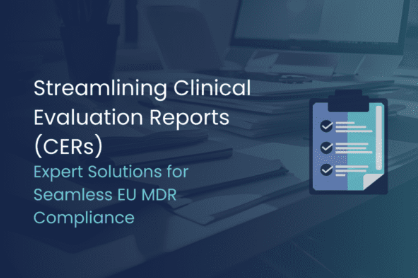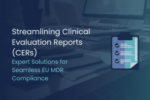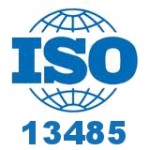Clinical Evaluation Reports (CERs) are a crucial component in the regulatory submission process for medical devices, especially in markets like the European Union, where compliance with the EU Medical Device Regulation (EU MDR) is mandatory. These reports serve as documented evidence to establish that a medical device meets the required safety and performance standards.
However, for many manufacturers, preparing and maintaining CERs can be a daunting task. From navigating ever-evolving regulatory requirements to conducting rigorous literature reviews, the process of creating a CER is resource-intensive and often overwhelming. In this blog, we explore why CERs present such significant challenges to medical device companies and how Celegence can help streamline the process with expert consulting services and innovative solutions.
Why are CERs considered Problematic?
Navigating Complex and Evolving Regulatory Requirements
One of the biggest challenges in creating CERs is staying up-to-date with the ever-changing regulatory landscape. Different markets have specific regulations, and these go through updates quite often, which add additional complexity to the process. For instance, with the introduction of the EU MDR, the requirements for clinical data have become more stringent, making it difficult for manufacturers to maintain compliance without constant regulatory vigilance and post market surveillance (PMS).
It is the expectation that manufacturers need to continuously monitor any updates to the regulations that are applicable to their devices, any guidance documents that may have to be referred to, and expectations from the Notified Bodies based on previous review experiences. As stated earlier, the EU MDR has heightened the requirements for robust and relevant clinical evidence, particularly for higher-risk devices. There is an increased demand and expectation for post-market clinical follow-ups (PMCF) and systematic evaluations of clinical data, which adds an additional layer of complexity to an already complicated process.
Hurdles associated with the Data Collection and Literature Review Processes
The process of gathering sufficient clinical data for a CER is often one of the most challenging aspects for medical device manufacturers. Many devices, especially legacy devices, and low-risk devices, may lack the clinical data required by the current regulatory standards. Moreover, the collection of high-quality, robust, relevant, and up-to-date clinical data can be a time-consuming and costly endeavor.
Another critical component of CERs is the systematic literature review process. Conducting a comprehensive review that meets regulatory standards requires specialized skills and access to extensive databases. Even then, ensuring that the literature review is thorough and includes all relevant data points can be a significant hurdle. For medical devices that have been on the market for several years, as well as for low-risk devices, and devices used in conjunction with other medical devices, it can be especially difficult to find relevant studies or clinical and technical data that align with the product’s intended use and safety profile.
Resources needed to create a CER
Creating a CER is not a one-time activity; it requires ongoing efforts to assess relevant clinical data, maintain compliance, update reports, and respond to regulatory body feedback. The process demands a combination of specialized knowledge in regulatory affairs, clinical research, and literature analysis, making it a resource-intensive process for manufacturers.
Furthermore, manufacturers must ensure that the content presented in their CERs are consistent across all documentation that are to be submitted to the Notified Bodies. This means, there is the expectation of close attention to detail, and frequent updates as and when new clinical data becomes available. The need for resources to perform these activities, whether internal or through outsourcing, can place a considerable burden on small to medium-sized manufacturers, who often lack the internal bandwidth to manage these tasks effectively.
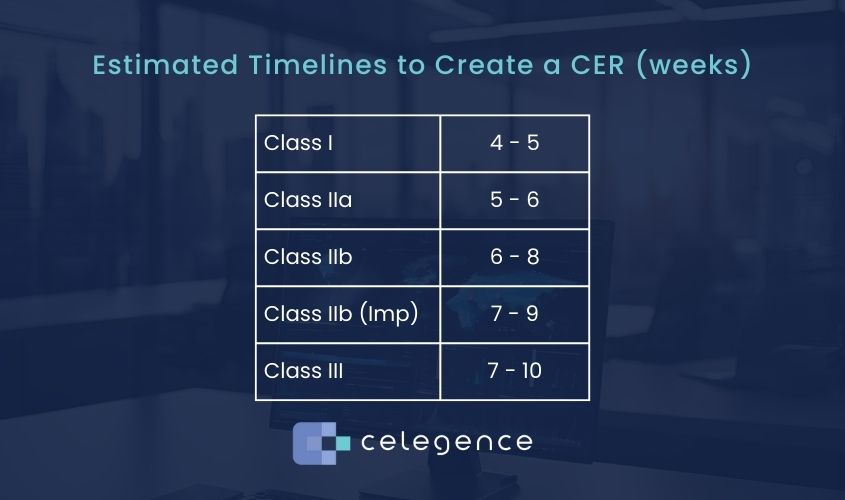
How often should a CER be updated?
- New information is received from the post market surveillance that has the potential to change the current evaluation process;
- Any updates to the design of the device or manufacturing process which impacts the safety and performance of the medical device;
- Any new risks identified from literature or other sources of data that affect the safety and performance of the device.
Based on the parameters stated above, the manufacturer must decide the frequency of update of the CERs.
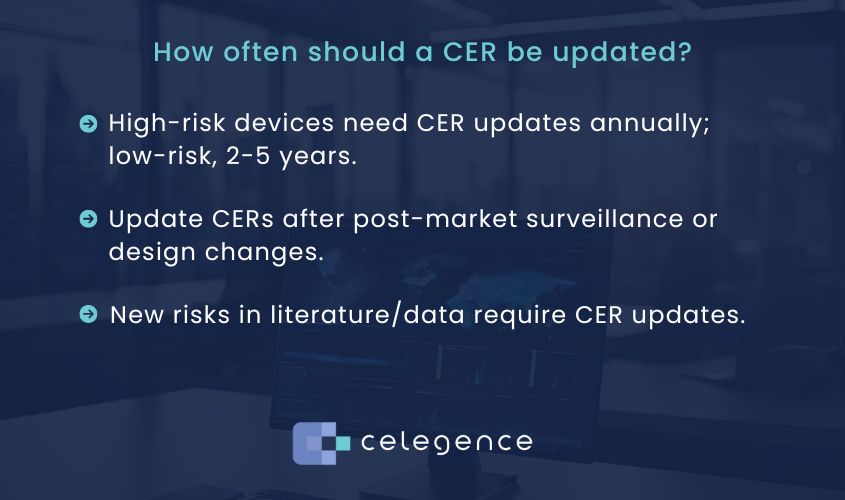
Using consultants can help simplify the process of CER developmentThere are many complexities associated with navigating the regulatory landscape for medical devices. Outsourcing experts can offer tailored resources to help medical device manufacturers meet regulatory requirements efficiently – data collection, literature reviews, or regulatory submissions – to guide device manufacturers and provide the expertise needed for compliance with the most stringent requirements. you gain access to a team of regulatory professionals who stay up to date with the latest industry regulations and Notified Body expectations. This ensures that your CERs are not only compliant but also tailored to meet the specific needs of your medical device based on the risk classification and market.
AI-Enabled Tools for Efficient Systematic Literature Review
Employing AI-enabled systematic literature review solutions can also assist with CER tasks and maintenance. Traditional literature reviews are time-consuming and prone to human error. AI-powered tools streamline the data extraction process, enabling faster and more accurate reviews, while reducing the burden on internal resources.
AI algorithms sift through thousands of documents to identify the most relevant studies and data points, ensuring a more efficient and thorough literature review. This ultimately helps speed up the CER development process, allowing companies to submit their reports faster and with greater confidence with respect to the accuracy and comprehensiveness of the data.
Tailored Solutions for Medical Device Manufacturers
Employing regulatory consulting and literature review services like these as outlined can help manufacturers reduce compliance costs over time, integrating with your internal teams and workflows to optimize the CER development process, implement cost-effective solutions, and provide insights into how solutions like AI-enabled software can further streamline compliance efforts.
Conclusion: Streamlining CERs for Faster Market Access and Regulatory Success
Creating and maintaining compliant CERs is both challenging and resource-intensive, requiring manufacturers to balance stringent regulatory demands with efficiency. However, these hurdles can be overcome with the right expertise and tools.
The right combination of technology and skilled resources can help streamline your CER process and ensure your CERs are compliant with requirements, enabling faster regulatory approvals and confident market entry.
MedTech Intelligence Content Partner
![]()
This blog post was previously posted by Celegence LLC. The author is employed by or otherwise directly associated with this Partner.

